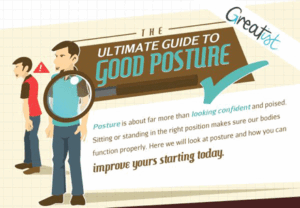What are Shin Splints?
What are Shin Splints?
We treat a lot of different conditions at The Boston Bodyworker, ranging from general stress and fatigue to chronic pain. One of the more popular complaints we get from our running population is shin splints. If you have ever had them, you know how uncomfortable the pain can be and how it sidelines you at the most inopportune times.
Shin pain, commonly along the distal (lower), inside aspect of the tibia (long bone between the knee and ankle) can seemingly come on by surprise. Even if you are being observant about your training and listening to even the “minor” aches and pains that are associated with this condition, you may still be prone to the occasional occurrence of this nagging little injury. Shin splints are quite the anomaly in the physical medicine world. There are many schools of thought about both “how” and “why” they occur as well as recommended treatment suggestion on how to combat them.
Shin splints can occur somewhat unsuspectingly, but my experience has shown me a rather consistent pattern when taking a patients history. The combination of overuse/repetitive stress is frequently accompanied by an increase in training by more than 10%. Characteristically, this occurs over a prolonged period of time after placing constant pounding and stress on bones, joints and muscles of the lower leg. However, they can also occur rather quickly, like when one starts a new training program (i.e. starting a new sport). The end result is irritation and inflammation, which leads to pain.
Some Factors that can contribute to shin splints are:
- Running down hill
- Sudden increase in your training frequency, duration or intensity
- Old shoes
- Exercising on hard or inclined surfaces
- Previous history of shin splints that may not have been rehabbed properly
- Flat feet, ridged arches and over pronation
So what is the pain I am feeling?
 The pain you are feeling can be from tight calf muscles stressing the tenoperiosteum. The ‘teno-whata-what-sium’? I know, right? The word is actually a combination of two types of connective tissues. ‘Teno’, meaning tendon, the part of the muscle that connects muscles to the bones, and the periosteum, the thin layer that envelops the bones. Over time, calf tightness can create tensile and shear loading on this area of the lower leg that can elicit severe pain. The reason pain occurs in this area and not in so many other areas the tendons attach to bones is because of a thin membrane of periosteum known as the interoseous membrane (visualize a soap bubble before you blow it through a hole) that bridges between the tibia and fibula. A portion of the tibialis posterior muscle (deep calf muscle) attaches to this thin membrane. When the muscle is placed under extreme loads and stress over time, it becomes tight, as do its counter parts, the soleus and gastrocnemius. The end result is medial tibial stress syndrome, a.k.a. shin splints.
The pain you are feeling can be from tight calf muscles stressing the tenoperiosteum. The ‘teno-whata-what-sium’? I know, right? The word is actually a combination of two types of connective tissues. ‘Teno’, meaning tendon, the part of the muscle that connects muscles to the bones, and the periosteum, the thin layer that envelops the bones. Over time, calf tightness can create tensile and shear loading on this area of the lower leg that can elicit severe pain. The reason pain occurs in this area and not in so many other areas the tendons attach to bones is because of a thin membrane of periosteum known as the interoseous membrane (visualize a soap bubble before you blow it through a hole) that bridges between the tibia and fibula. A portion of the tibialis posterior muscle (deep calf muscle) attaches to this thin membrane. When the muscle is placed under extreme loads and stress over time, it becomes tight, as do its counter parts, the soleus and gastrocnemius. The end result is medial tibial stress syndrome, a.k.a. shin splints.
Great Drew! Now how do I get rid of this so I can run? I have a race in two weeks.
I wish I had a miracle cure for this condition. If I did, I would have a business exclusively dedicated to the treatment and cure of shin splints. It would be a HUGE windfall. One in three runners will suffer a bout of shin splints in their lifetime, typically at the worst possible time (i.e. before your first marathon, starting a new exercise routine to lose weight, etc.)
Unfortunately, the only real cure is rest.
Yeah right!
Try telling that to the aforementioned inaugural marathoner.
No Magic Bullet!
I will say that I have had considerable success using active engagement techniques in conjunction with kinesiology-taping methods that have provided significant diminished pain with a return to activity. This is NOT a cure. This is merely a “Band-Aid” to get you through. Conservative treatments such as rest and ice are paramount when coping with this injury. Failure to do observe this may lead to more serious issues such as a stress fracture.
An Ounce of Prevention
There is no guaranteed way to avoid getting shin splints. If you have had them in the past or are concerned that you may get them, than a pro-active approach is required (as in any training you do). First and foremost, be conservative in ramping up any training. Anything more than 10% is inviting trouble. Following up your training with ice massage as well as some self-care techniques (calf stretches and self massage along the tibia) is your best bet for avoiding this nasty beast of an injury. Failure to consider its impact on your training is a slippery slope. True, you may never get them, but do you really want to tempt fate when you just spent the last 4 months training for the biggest race of your life?
I hope this helps you to understand a little more about shin splints. If you have questions about this or would like to know more about another type of injury you are experiencing, please shoot me an email and I will consider it for an upcoming blog post.
Until next time, Feel Better!
Ready to #feelbetter?
You're just a click away from a wicked good massage!
-

60 Minute Massage Gift Card
$170.00 Add to cart -

90 Minute Massage Gift Card
$255.00 Add to cart -

Mini Aer Small Room Air Purifier
$149.00 Add to cart -
Sale!

Thera-Pearl Sports Pack/Hot Cold
Original price was: $14.99.$12.99Current price is: $12.99. Add to cart -

3 Somadome Sessions Gift Card
$135.00 Add to cart -

TheraBand CLX Connective Loop
$14.99 Select options -

6 Somadome Sessions Gift Card
$270.00 Add to cart -
Sale!

Biofreeze
Original price was: $14.99.$12.99Current price is: $12.99. Add to cart
Passion Mountain
I was at an event recently and was asked by somebody how I could STILL be so passionate for what I do. He said, “What I mean is that you talk about what you do with the passion of child flipping through a new pack of baseball cards. I wish I was that passionate about…
Read MoreFish You Should Scale Back On
New Englander’s love their seafood and we deepen our love affair every summer when our favorite crustaceans, ‘lobstah’ is a plentiful. But what is the best seafood for us and what are the ones that we should be staying away from regardless of how yummy they may be? Monterey Bay Aquarium has combined data from…
Read MoreSports are a Great Metaphor
It’s no secret that my life has always revolved around athletics. From my early days playing pop warner football, through my college years of lacrosse and on into the various community leagues since, being part of a team has always been where I feel most comfortable. What I enjoy most about being part of a…
Read MoreWhat is an Expert?
“An expert is someone widely recognized as a reliable source of technique or skill whose faculty for judging or deciding rightly, justly, or wisely is accorded authority and status by their peers or the public in a specific well-distinguished domain.” – Wikipedia This past month I flew to Atlanta to present a few classes in…
Read MoreThe Power of a Hug
Originally Posted 5/1/2014; following the 1 year anniversary of the Boston Marathon Bombings and our mission to rebound after these horrible attacks on our city. We helped orchestrate the ‘One Run for Boston’; a 3328.2 NON-STOP running relay from LA to Boston, raising over $500K for the victims and survivors of the events of 4/20/2013.…
Read MoreTips from the Table
Without fail, every marathon season, I am asked by my patients, what kind of advice I would offer up to them as they prepare to run the Boston marathon. I first admit that I have never (nor will ever) run a marathon, but given my unique insight of spending 1000’s of hours alone in a…
Read MoreShoulder Impingement
The glenohumeral joint is a highly complex articulation. It has the greatest range of motion of any joint in the body. However, its increased motion occurs at the expense of stability, requiring the soft tissues to play a more critical role in maintaining joint integrity. As a result of increased mechanical demands, numerous soft-tissue injuries…
Read MoreTrain, train, train. Train of fools.
In my seventeen years as a massage therapist, I am still amazed by some of the things I see in my office. Being situated 1/10th of a mile from the finish line of one of the most prestigious marathons in the world, the Boston Marathon, we see more than our fair share of runners coming…
Read MoreAchilles Tendon Disorder
Achilles Tendon Disorder Massage therapists see many clients with active lifestyles. Running, jumping, dancing, climbing, or any number of other activities can put serious stress on the Achilles tendon (AT). AT disorders also can contribute to biomechanical disorders in the foot and lower extremity. That is why it is important for the massage practitioner to…
Read More


